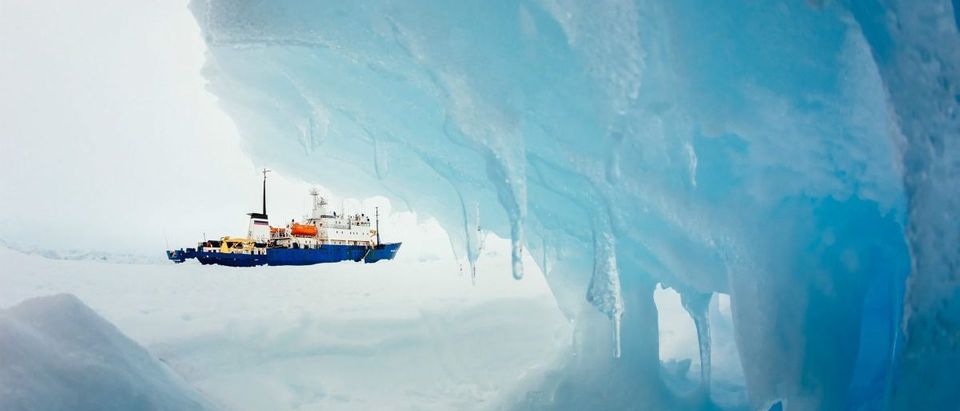Scientists were shocked by what they found while poring over accounts by famous South Pole explorers from about a century ago — findings that could change the way experts think about Antarctica and global warming.
Researchers found that Antarctic sea ice extent has barely changed since Ernest Shackleton’s botched expedition to map out the South Pole in 1917.
Antarctic sea ice conditions in Shackleton’s day mirrored those of today, according to a new study using logs compiled by Shackleton, in addition to data from other noteworthy Antarctic forays during the early 20th Century.
Lead researcher Dr. Jonathan Day and his team were the first to calculate Antarctic sea ice conditions prior to the 1930s. Day estimates sea ice extent ranged from 3.3 and 4.3 million square miles and continued to grow into the 1950s.
Scientists have only really looked at Antarctic sea ice levels from the 1950s onward, which shows a relative decline in sea ice. But Day’s study shows current Antarctic sea ice “is just 14 per cent smaller than at the highest point of the 1900s and 12 per cent bigger than than than the lowest point.”
Why is that significant? It means Antarctic sea ice has fluctuated throughout the 20th Century due to natural climatic shifts, and not man-made warming.
“We know that sea ice in the Antarctic has increased slightly over the past 30 years, since satellite observations began,” Day said, according to The Telegraph. “Scientists have been grappling to understand this trend in the context of global warming, but these new findings suggest it may not be anything new.”
“If ice levels were as low a century ago as estimated in this research, then a similar increase may have occurred between then and the middle of the century, when previous studies suggest ice levels were far higher,” he added.
It’s more evidence Antarctic sea ice is less influenced by man-made warming than Arctic sea ice.
Arctic sea ice extent has shrunk more than 7 percent per decade since 1979 while Antarctic sea ice has actually grown about one percent per decade — despite what most climate models predicted.
A 2015 NASA study found Antarctica’s ice sheet increased in mass from 1992 to 2008. The study found ice gains in Eastern Antarctica more than offset ice loss from melting glaciers in the west.
Day’s study comes just after the British Antarctic Survey (BAS) found the collapse of a major South Pole was sparked by an El Nino during the 1940s, not man-made climate change.
The Pine Island Glacier began melting about 30 years before the modern warming trend of global average temperature that began in the late 1970s.
“A significant implication of our findings is that once an ice sheet retreat is set in motion it can continue for decades, even if what started gets no worse,” NASA’s Bob Bindschadler, a co-author of the report, said in a statement.
Follow Michael on Facebook and Twitter
All content created by the Daily Caller News Foundation, an independent and nonpartisan newswire service, is available without charge to any legitimate news publisher that can provide a large audience. All republished articles must include our logo, our reporter’s byline and their DCNF affiliation. For any questions about our guidelines or partnering with us, please contact licensing@dailycallernewsfoundation.org.


